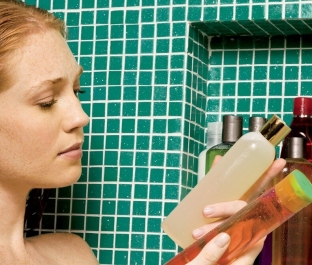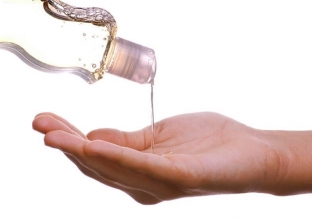The endurance and strength of our hair is put to the test almost daily. On the one hand, they are tested for strength by wind, rain, temperature changes, water quality, & nbsp; smoky air. On the other – we regularly add loads to them in the form of dyes, perms, hot styling, and as a result we get split ends, dull strands and even hair loss. Many manufacturers of shampoos and hair cosmetics produce products that promise to make damaged hair beautiful and healthy. Usually these products contain silicones. Whether such products really heal, and what role silicones play in hair health, estet-portal.com understood.
How silicones make hair look healthy
Everyone who has ever watched an advertisement for hair shampoo on TV knows that each hair consists of a rod covered on top with a tiled layer of keratin scales. Usually, manufacturers of hair cosmetics clearly demonstrate how, under the influence of various adverse & nbsp; conditions, the hair scales become fluffed up and even fall off, the hair shell becomes full of holes and can no longer retain moisture and nutrients from therapeutic masks. Outwardly, it looks like dull split strands that remain in shreds on the comb. Further, it is proposed to use a cosmetic product that will smooth out the frizzy hair scales and restore the missing ones, after which the hair will again become smooth and healthy. This is where the main difficulty lies in restoring hair health.
The fact is that the injured hair, & nbsp; lost scales, it is not restored back. It is possible that new hair will grow intact, but this will take time, and the hair already looks extremely unpresentable. As a result of the search for a way to give damaged hair an acceptable look, cosmetics containing silicones appeared. How do they work?
Hair cosmetics that can protect and preserve hair usually contain silicones that cover each hair with a multi-layered protection.
- 1st layer – as a rule, substances containing collagen, which fill the scales remaining on the hair shaft and thereby give elasticity to the hair, make the hair visually thicker;
- 2nd layer – polymers that, due to their long-chain molecular structure, are capable of wrapping each hair in a spiral and pressing the fluffy scales to the rod, making the hair visually smooth;
- 3rd layer – silicone itself, covering the previous protective layers with a film that strengthens and protects the previous layers, making the hair visually shiny.
Protective silicone film is usually difficult to remove, can be both hydrophilic and water-repellent, and has other properties depending on the additional components that the manufacturer has invested in it.

What troubles and dangers can silicones in shampoo bring to hair
Silicones themselves – these are simply organosilicon polymers that are not harmful to health, however, in hair products, the manufacturer can add substances to their composition that give silicones increased resistance to aggressive environments. But these substances are often toxic.
Silicones can accumulate both on the hair (layering each other) and on the scalp, causing hair loss. On the one hand, different silicones, layered, make the hair brittle and weak. On the other – they can create an impenetrable film on the scalp, preventing sebum from being released. Such a film is especially dangerous if the patient decides to switch to a fashionable sulfate-free shampoo, which is not able to clean the skin with high quality. As a result, fat and dirt are not washed out, seborrhea and itching develop, blood and oxygen circulation is disturbed, and hair loss begins.
At the same time, the patient can stop using cosmetics with silicones, and the hair returns to a terrible state – but it was not the silicones that were to blame for it, which simply covered the flaws, but the previous poor-quality care & nbsp; hair. How to understand if there was harm from silicone-containing cosmetics?
Features of different silicones in hair cosmetics
A group of easy-to-rinse silicones commonly used in professional hair care products: Trideceth-12, Dimethicone Copolyol, Dimethicone Copolyol / HWP, Hydroxypropyl, Polysiloxane, Lauryl Methicone Copolyol. These silicones have no cumulative effect.
A group of so-called leave-in silicones that are difficult to remove from the hair even with a highly alkaline shampoo: Amodimethicone, Behenoxy Dimethicone, Stearoxy Dimethicone. These silicones most often promise & nbsp; extra volume, softness and silkiness, the formation of a visual effect of healthy hair.
A group of silicones used in mass market cosmetics: Cetearyl Methicone, Cetyl Dimethicone, Cyclomethicone, Cyclopentasiloxane, Dimethicone, Dimethiconol, Stearyl Dimethicone, Trimethylsilylamodimethicone. Create a resistant film, provide a "natural" shine, facilitate combing. They are used in almost all means - from dyes to medical masks. Sometimes used in professional fluids for gluing split ends. These silicones are almost impossible to get rid of and accumulate quickly.

What to do if a patient complains of hair loss
If the patient's health, based on the results of the examination, does not suggest that hair loss is associated with some diseases, then it is worth paying attention to the usual care products. The patient should know that silicones in hair cosmetics – not harmful, but also not a healing or restorative component.
- A shampoo or mask should not have more than 3 silicones on the ingredients list, and they should not top the list.
- If your scalp is oily, you should not use conditioners with silicone – the film they create will only increase the spread of sebum through the hair.
- If hair repair products with silicones are used, contact with the scalp should be avoided.
If the patient cannot refuse the intensive use of cosmetics that promise luxurious volume, silkiness and elasticity of the hair, he should be strongly advised to use weekly deep hair cleaning products.
Read also: Diffuse alopecia: why is it difficult to treat?







Add a comment